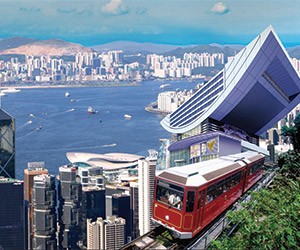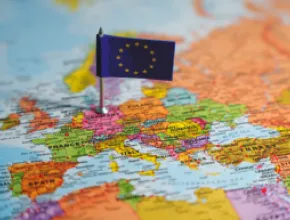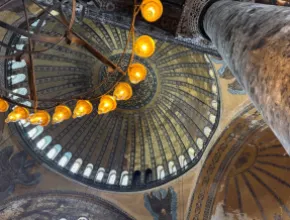While Hong Kong is Asia’s most established destination for meetings and incentives, it continues to hold surprises for even those who have been coming back for years. That’s because Hong Kong is always in the midst of an infrastructure boom where new high-end hotels, office towers, cultural attractions and venues continually add more adrenaline to this most high-energy of urban hubs.
Groups coming to Hong Kong are finding much more to see and do than in years past, which is a good thing since the length of incentive programs has grown from an average of three nights to five in recent years, according to James LaValle, manager of conventions, exhibitions and corporate events for the Hong Kong Tourism Board (HKTB).
“In the old days, incentive groups coming to Hong Kong were interested in two things: eating and shopping,” he said. “Now it’s also about culture and wellness. So we’re constantly developing new things for people to experience.”
While incentive business has bounced back since the recession, it still reflects a pattern established during those lean years, he added.
“During the recession we saw many groups that once did programs with two or more Asian destinations scale back to just doing Hong Kong,” he said. “The overall program grew shorter, but the time in Hong Kong grew longer. Even though the recession is over and business is up, we’re still seeing that trend for a single-city incentive.”
While the program may be based in Hong Kong, taking a ferry to Macau for a day of exploring the colonial Portuguese old town as well as the Vegas-style casinos is a standard practice, LaValle noted. Currently under construction, the Hong Kong-Zhuhai-Macau Bridge is expected to open in 2018, cutting travel time between the destinations.
“The two destinations really complement each other—Macau is more of an enhancement to us, not a competitor,” he said.
To further boost meetings business from North America, the HKTB recently upgraded its Hong Kong Rewards program. Among the new benefits is a complimentary cocktail reception for groups of 50 or more staying at least three nights in one of 45 partner hotels through March 31, 2017. Others include privileges at participating attractions, such as Hong Kong Disneyland, Ocean Park, Madame Tussauds Hong Kong and Jumbo Kingdom, as well as shopping and dining discounts at over 400 outlets at Hong Kong International Airport.
“Hong Kong is not a cheap destination, but this is a way to offer value in one of the world’s great cities,” LaValle said. “The airport shopping is a really nice aspect to the rewards—you can pick up whatever you forgot to buy.”
While Hong Kong hotels command high rates, LaValle suggests that meeting planners searching for optimal value schedule dates outside of the prime tradeshow periods, which run from March through mid-May and mid-September through mid-November.
New Developments
For planners looking for new ways to round out itineraries, there’s no shortage of new cultural developments on the horizon. While the Central and Wan Chai districts on Hong Kong Island and the Tsim Sha Tsui district on the Kowloon peninsula remain the main commercial hubs, areas such as Lantau Island and West Kowloon are hot spots for new visitor attractions.
Scheduled to open in phases beginning next year, the West Kowloon Cultural District is taking shape on reclaimed land west of the Yau Ma Tei district. Among its major components will be the M+ museum, which will be a showcase for contemporary visual art in a spectacular landmark building when it opens in 2019. Others will include performing arts theaters, a waterfront park with a sculpture garden and event plazas capable of hosting up to 10,000 people.
“This cultural district will really allow artists to come together and build upon an area that is already starting to boom,” LaValle said. “It’s near the Ritz-Carlton and W hotels, which opened a few years ago, so it will really strengthen that area as a visitor destination.”
PageBreak
Another new offering is PMQ (Police Married Quarters), a historic barracks building in Central that has been restored and converted into nearly 100 art and design studios. Event space at the complex includes Qube, a multiuse function room seating up to 500 people, and a courtyard.
“You can do events in the central courtyard and people can also walk around and visit the art studios,” LaValle said.
Team Challenges
Hong Kong has also been expanding its range of teambuilding and CSR activities for groups. Among the possibilities are opportunities to visit Tai O, a traditional fishing village on Lantau Island where people still live much as they did in the early 20th century, including net fishing off the backs of boats.
“People think of Hong Kong as urban, but we actually encompass many small villages in an area the size of Rhode Island,” LaValle said. “At the fishing village on Lantau Island, which is just 45 minutes from downtown, groups get the opportunity to work with an aging community, doing things like repairing wheelchairs or repairing walkways. There are also environmental projects like planting trees throughout the New Territories.”
Hong Kong’s many theme parks are also a source of activities and teambuilding programs. At Ngong Ping 360, the new Stage 360 attraction takes up to 100 guests behind the scenes on a Hong Kong action movie where they can watch stuntmen perform action sequences from popular films.
Also new is the Hong Kong Disneyland Fun Cooking Class, where teams learn the art of preparing dumplings and other dim sum favorites. Hong Kong Disneyland also provides multiple meeting areas, including the Conference Centre, which offers 16 meeting rooms and a 9,400-square-foot ballroom.
“Disneyland, which is currently building a third hotel, is especially popular with planners of large international conferences where attendees include people coming in from places like China, Singapore and Korea,” LaValle said. “Our theme parks are well suited for hosting groups of a thousand or more.”
Hotel Happenings
Hong Kong’s already impressive hotel inventory is also getting a boost. Shangri-La Hotels and Resorts’ 545-room Kerry Hotel is scheduled to open in December on the Hung Hom Bay waterfront in Kowloon. The luxury property will have five restaurants and bars as well as generous meeting space that includes a 20,000-square-foot ballroom, a junior ballroom, 17 breakout rooms and numerous indoor and outdoor event spaces.
“The Kerry will be Hong Kong’s first conference-style hotel that is comparable to what planners are used to in the U.S.,” LaValle said. “Its ballroom is at least 50 percent bigger than the largest hotel ballroom in Hong Kong. It will enable us to better serve groups that are too small for the convention center, which targets groups of 1,500 or more, and yet are too large for hotel meeting space.”
The Rosewood Hotel Group plans to open the 600-room Rosewood Hong Kong, along with a neighboring 334-room hotel, in a prime waterfront location in Tsim Sha Tsui next year. Another major property scheduled to debut in 2017 is the 495-room Hong Kong Ocean Park Marriott at the entrance to the Ocean Park theme park.
Earlier this year Hong Kong increased its supply of boutique properties with the debut of Hotel Stage, which opened in Kowloon’s Yau Ma Tei district, an area of heritage sites and family-owned traditional shops. The 97-room property is adorned by work by local artists and includes a library lounge and restaurant.
Meeting and event space, which accommodates up to 150 attendees, includes a wine bar venue called the Muse as well as high-tech Day Studios that can display multimedia installations.
Set to open next year, the pentahotel Tuen Mun will be a 298-room property located in a repurposed industrial high-rise building.







